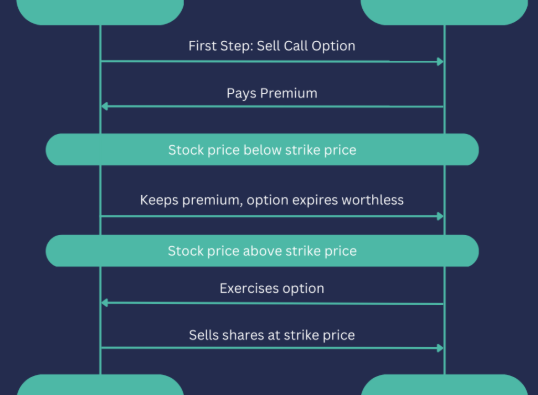
Value investing is more than just a method—it’s a mindset. Rooted in patience and discipline, this investment philosophy focuses on uncovering undervalued stocks that offer solid long-term potential. Rather than chasing market trends or hype, value investors dig deep into a company’s fundamentals to identify opportunities others might overlook.
Understanding Value Investing
At its core, value investing involves buying stocks that are trading for less than their intrinsic worth. This intrinsic value is determined through a thorough analysis of a company’s earnings, assets, and other key indicators. The premise is simple: the market may temporarily undervalue strong companies, and investors who recognize this discrepancy can benefit when prices eventually correct.
Unlike momentum traders or growth investors, value-focused individuals adopt a contrarian approach—ignoring short-term fluctuations in favor of long-term gains. It’s a strategy made famous by legends like Benjamin Graham and Warren Buffett.
How Value Investing Works
Value investors identify promising companies whose current market prices do not reflect their actual worth. These businesses often face temporary setbacks or suffer from negative sentiment, creating opportunities for keen-eyed investors.
Central to this approach is the concept of a “margin of safety.” This principle encourages purchasing stocks well below their calculated value, minimizing downside risk in case projections fall short. The strategy prioritizes consistent earnings and solid fundamentals over fleeting trends.
Key Metrics Used in Value Analysis
A few crucial metrics help investors determine whether a stock is undervalued:
- EBIT (Earnings Before Interest and Taxes): Highlights a company’s profitability without the influence of tax structures, offering a clearer picture of operational success.
- EBITDA (Earnings Before Interest, Taxes, Depreciation, and Amortization): Accounts for non-cash expenses to evaluate core profitability, especially useful when comparing firms in capital-intensive industries.
- Price-to-Earnings (P/E) Ratio: Measures how much investors are willing to pay for each dollar of earnings. A lower ratio may suggest undervaluation, though context is key.
- Price-to-Book (P/B) Ratio: Compares a stock’s market value to its book value, helping assess whether it’s priced fairly relative to its assets.
Strategies for Effective Value Investing
To succeed in value investing, consider the following:
- Conduct Thorough Research: Analyze balance sheets, earnings reports, and industry conditions to gauge a company’s true value.
- Define Investment Goals: Establish clear objectives, whether it’s stable dividend income, capital appreciation, or portfolio diversification.
- Manage Risk Wisely: Use techniques like portfolio diversification and stop-loss orders to safeguard against unpredictable events.
- Track Performance: Regularly review your holdings and reassess companies as new data emerges.
- Stay Patient: Value plays can take years to pay off. Trust your analysis and avoid being swayed by market noise.
- Seek Expert Guidance: Beginners may benefit from working with financial advisors to fine-tune their strategy and avoid common pitfalls.
Value Stock Performance Over Time
Historically, value stocks outperformed their growth counterparts from the 1970s until the early 2000s. While recent years have seen growth stocks gain an edge, performance can swing based on economic conditions. For example, higher interest rates often favor value investments, whereas growth stocks flourish in low-rate environments.
A balanced portfolio with exposure to both styles can provide stability across market cycles.
Approaches to Value Investing
There are several ways to implement a value strategy:
- Mutual Funds and ETFs: Ideal for passive investors looking for broad exposure to undervalued stocks with professional oversight.
- Factor-Based ETFs: These funds target value-specific metrics, offering higher returns with corresponding risks.
- Direct Stock Selection: For hands-on investors willing to analyze individual companies, picking stocks can offer tailored results and deeper insight.
- Investing via Berkshire Hathaway: Following Buffett’s lead by owning shares in his conglomerate offers built-in diversification and a proven value strategy.
Why Stocks Become Undervalued
Several factors can cause a stock’s price to drop below its fair value:
- Investor Sentiment: Fear, hype, or herd behavior often skew stock prices, detaching them from underlying fundamentals.
- Economic Downturns: Recessions or crises trigger broad selloffs, offering buying opportunities for long-term investors.
- Temporary Setbacks: Legal issues, recalls, or management changes can hurt prices, even if the company remains fundamentally strong.
- Cyclical Industries: Businesses tied to the economic cycle may face undervaluation during downturns despite future growth potential.
Risks to Be Aware Of
Despite its advantages, value investing carries certain risks:
- Outdated Data: Relying on stale or incomplete financial information can lead to poor decisions.
- Unpredictable Events: Unexpected disruptions like natural disasters or lawsuits can alter a company’s trajectory.
- Misleading Ratios: Financial metrics must be interpreted carefully, as different accounting methods can distort reality.
- Overconcentration: Investing too heavily in a few stocks increases exposure to individual risks.
- Emotional Bias: Impulsive decisions based on fear or euphoria often undermine long-term results.
Value vs. Growth Investing
| Aspect | Value Investing | Growth Investing |
|---|---|---|
| Investment Focus | Undervalued companies with steady earnings | High-growth firms with expanding revenues |
| Risk Profile | Typically lower to moderate | Often higher due to volatility |
| Time Horizon | Long-term outlook | Mix of medium and long-term strategies |
| Performance Drivers | Revaluation to fair price | Rapid revenue and earnings growth |
Both styles have their merits, and investors may benefit from blending them based on market conditions and personal risk tolerance.
Final Thoughts
Value investing is a powerful strategy for those willing to put in the time, maintain discipline, and think long term. By focusing on companies with solid fundamentals and buying them at attractive prices, investors can build wealth steadily—despite the inevitable ups and downs of the market.
This approach isn’t about chasing the latest trend; it’s about seeing the potential in the overlooked, staying grounded in analysis, and letting time do the heavy lifting.









